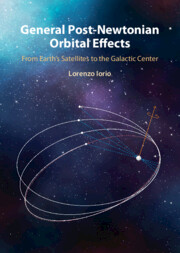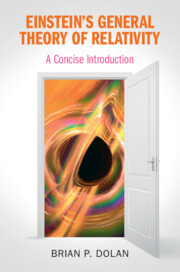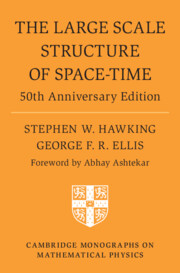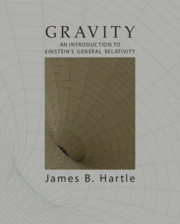Refine search
Actions for selected content:
62 results

Philosophy of Cosmology and Astrophysics
-
- Published online:
- 18 September 2025
- Print publication:
- 16 October 2025
-
- Element
- Export citation
20 - Post-Main-Sequence Evolution: High-Mass Stars
- from Part II - Stellar Structure and Evolution
-
- Book:
- Fundamentals of Astrophysics
- Published online:
- 10 November 2025
- Print publication:
- 24 July 2025, pp 137-152
-
- Chapter
- Export citation
Growth of black holes at the centre of early-type galaxies in MOND
-
- Journal:
- Publications of the Astronomical Society of Australia / Volume 42 / 2025
- Published online by Cambridge University Press:
- 25 June 2025, e065
-
- Article
-
- You have access
- Open access
- HTML
- Export citation
13 - Penrose diagrams and black holes: the Schwarzschild example
-
- Book:
- General Relativity
- Published online:
- 24 April 2025
- Print publication:
- 08 May 2025, pp 137-148
-
- Chapter
- Export citation

General Relativity
- A Graduate Course
-
- Published online:
- 24 April 2025
- Print publication:
- 08 May 2025

General Post-Newtonian Orbital Effects
- From Earth's Satellites to the Galactic Centre
-
- Published online:
- 28 November 2024
- Print publication:
- 05 December 2024
2 - Introduction to general relativity 2: Vielbein and spin connection, anti-de Sitter space, black holes
- from Part I - Formalism
-
- Book:
- Introduction to Supergravity and its Applications
- Published online:
- 14 November 2024
- Print publication:
- 21 November 2024, pp 18-29
-
- Chapter
- Export citation
14 - Spherically symmetric gravitational fields of isolated objects
- from Part II - The theory of gravitation
-
- Book:
- An Introduction to General Relativity and Cosmology
- Published online:
- 30 May 2024
- Print publication:
- 06 June 2024, pp 162-210
-
- Chapter
- Export citation
18 - Relativistic cosmology III: the LemaÎtre–Tolman geometry
- from Part II - The theory of gravitation
-
- Book:
- An Introduction to General Relativity and Cosmology
- Published online:
- 30 May 2024
- Print publication:
- 06 June 2024, pp 289-365
-
- Chapter
- Export citation
The role of outflows in black-hole X-ray binaries
-
- Journal:
- Proceedings of the International Astronomical Union / Volume 19 / Issue S378 / December 2023
- Published online by Cambridge University Press:
- 28 October 2024, pp. 87-89
- Print publication:
- December 2023
-
- Article
-
- You have access
- Open access
- Export citation
3 - Geodesics
-
- Book:
- Einstein's General Theory of Relativity
- Published online:
- 15 June 2023
- Print publication:
- 29 June 2023, pp 44-84
-
- Chapter
- Export citation

Einstein's General Theory of Relativity
- A Concise Introduction
-
- Published online:
- 15 June 2023
- Print publication:
- 29 June 2023

The Irresistible Attraction of Gravity
- A Journey to Discover Black Holes
-
- Published online:
- 02 March 2023
- Print publication:
- 02 March 2023

The Large Scale Structure of Space-Time
- 50th Anniversary Edition
-
- Published online:
- 17 February 2023
- Print publication:
- 16 February 2023
12 - Thermal X-rays from Neutron Stars
- from Part II - Observed Physical Characteristics
-
- Book:
- Pulsar Astronomy
- Published online:
- 21 July 2022
- Print publication:
- 04 August 2022, pp 192-210
-
- Chapter
- Export citation

Gravity
- An Introduction to Einstein's General Relativity
-
- Published online:
- 03 September 2021
- Print publication:
- 24 June 2021
-
- Textbook
- Export citation
11 - Steven Giddings
-
- Book:
- Conversations on Quantum Gravity
- Published online:
- 05 August 2021
- Print publication:
- 26 August 2021, pp 226-239
-
- Chapter
- Export citation
36 - Frank Wilczek
-
- Book:
- Conversations on Quantum Gravity
- Published online:
- 05 August 2021
- Print publication:
- 26 August 2021, pp 682-697
-
- Chapter
- Export citation
14 - Gerard ’t Hooft
-
- Book:
- Conversations on Quantum Gravity
- Published online:
- 05 August 2021
- Print publication:
- 26 August 2021, pp 275-296
-
- Chapter
- Export citation
30 - Andrew Strominger
-
- Book:
- Conversations on Quantum Gravity
- Published online:
- 05 August 2021
- Print publication:
- 26 August 2021, pp 588-598
-
- Chapter
- Export citation






